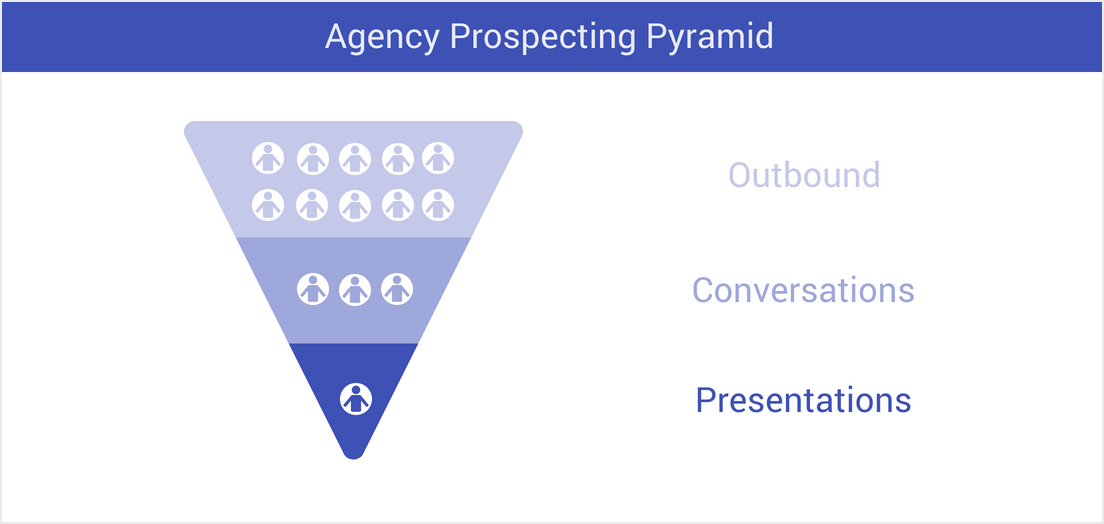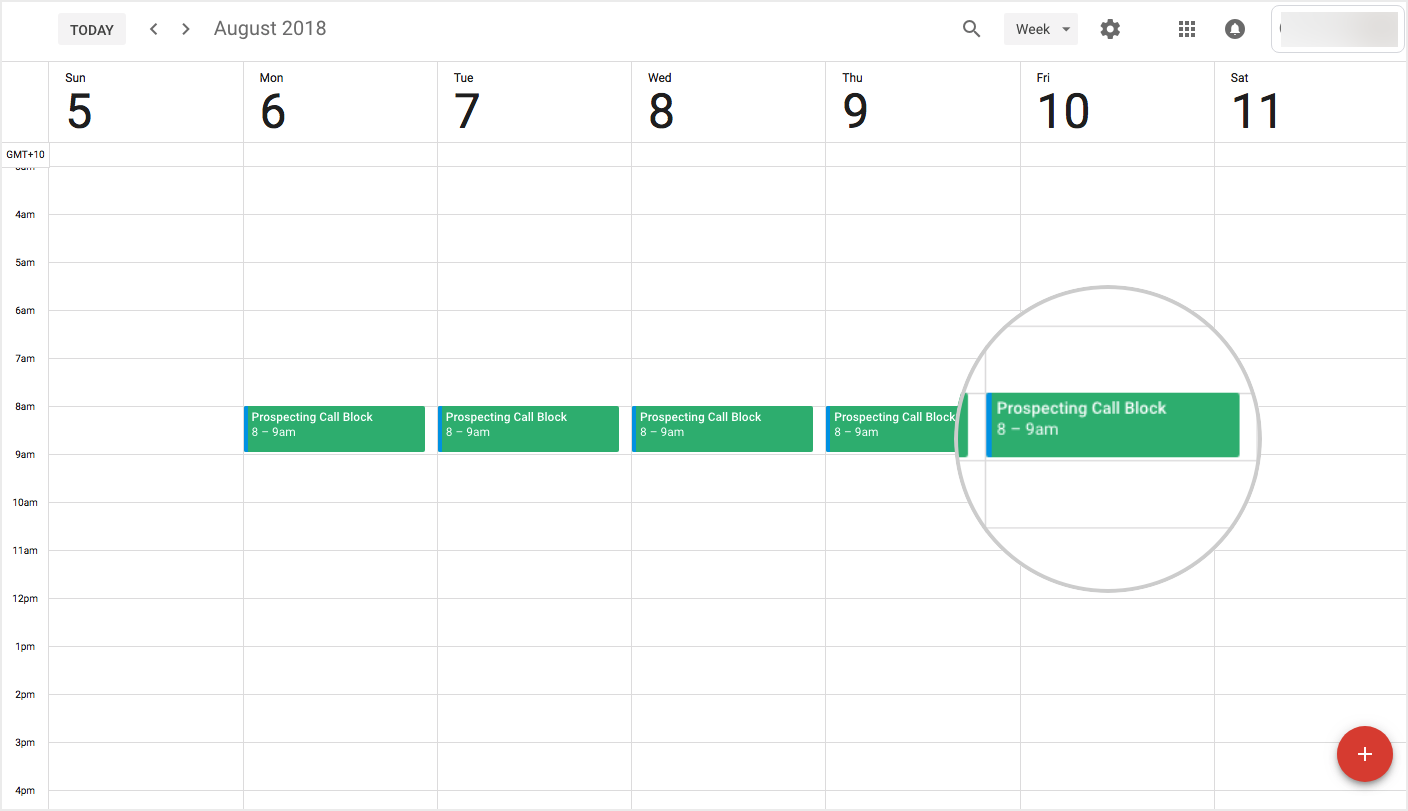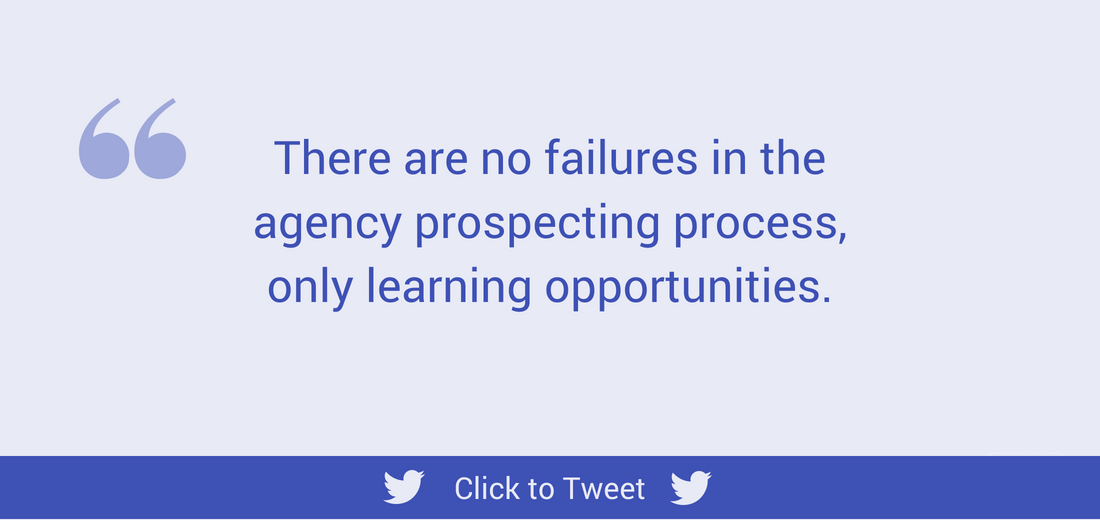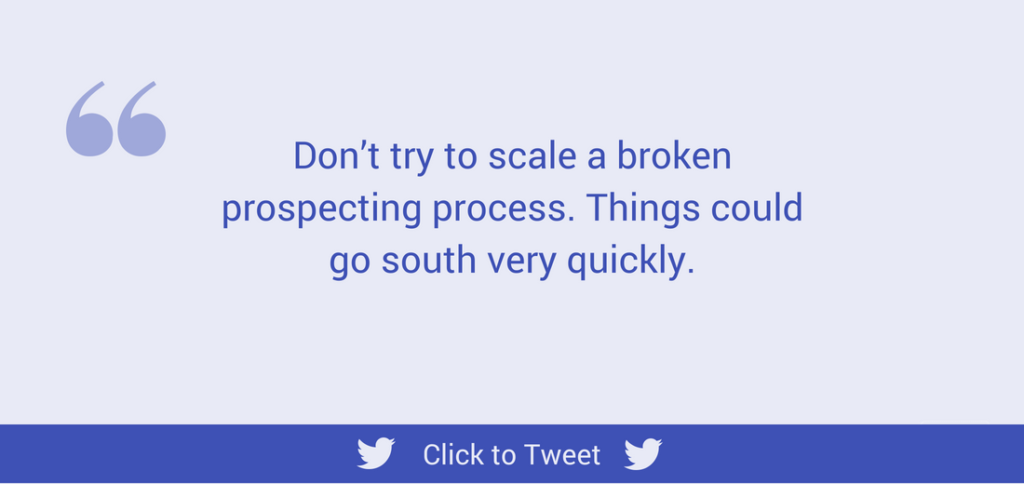The “cause” comes before the “effect.” If the effect you desire is more sales, then you need to create the cause for that outcome. Which in the case of agency sales, is a predictable prospecting process.
Prospecting is at the heart of any effective client acquisition strategy. Referrals, webinars, blog posts, and networking events all have their place. But the return is unreliable. Consistent sales prospecting will provide more tangible metrics and outcomes than any other approach to agency sales.
You can strive for sales growth in a systematic manner by controlling the metrics and establishing a predictable prospecting system. Below is a simple but effective 6-step process for doing so.
Step 1 – Plan for success
The first step in this agency prospecting process is one that often gets overlooked, and that’s planning. Understanding exactly what goal you are trying to achieve and the effort required to get there.
Let’s say your goal is to get 5 new clients every month. To come up with a plan to realize that goal, ask yourself questions like:
- How many sales presentations do I need to make to close 5 new clients? (Hypothetical answer: 10 presentations)
- How many prospects do I need to speak with to get 10 sales presentations? (Hypothetical answer: 50 conversations)
- How many contacts do I need to reach with outbound messages (InMails, emails, or phone calls) to deliver those 50 conversations? (Hypothetical answer: 200 contacts)

When you know what it takes to hit your target of 5 new clients every month, you can plan daily, weekly, and monthly activity metrics to make it happen. In this scenario, you’ll have to contact about 10 prospects a day to accomplish your goal. If you don’t contact 10 people a day, by the rule of averages, you won’t attain your goal. Sure, you might get lucky every now and then. But overall you will be behind on your growth objectives.
Step 2 – Block out time in your calendar
Once you know what your goal is and the actions required to achieve that goal, block out time in your calendar to ensure you get there.
How long will it take you to contact 10 prospects every day? Schedule it into your calendar as if it were a meeting. Block it out and don’t let anyone take that time from you. It’s your prospecting time, and it’s integral to the growth of your agency.
Don’t place this call block in your calendar randomly either. Be strategic about where it sits. Consider two things;
- When do you work at your best? What time of day will you be at peak performance to communicate with prospects?
- When are your prospects likely to be available and open to communication?
Both of these questions are contextually based on your situation. For example, some people are more productive first thing in the morning, whereas others are night owls. Take note of your personal rhythms and try to optimize this prospecting time.
As well, each prospecting niche will be slightly different. For example, a dentist will typically be doing patient work during the morning and afternoon hours. So the best time to reach the decision-maker at a dental practice is prior to 9am, at lunchtime, or at the end of the day. So, if your ideal target customer is a dentist, you would optimize your call schedule around those times to get the best outcomes.
Think about your ideal clients first and overlap their availability with your most productive hours. This gives you a prospecting block you can schedule into the calendar every day.

Step 3 – Record progress and hold yourself accountable
When you’re completing your prospecting activity, make sure you record everything.
How many outbound messages did you send? How many conversations did you have? How many deals did you close?
Log all of these metrics into a CRM software or Google Sheet alongside the contact or account details. It doesn’t matter so much about “how” or “where” you record this information, as long as you do. This will help you start identifying themes, patterns, and areas of opportunity.
Hold yourself accountable to both the activity and outcome-based metrics of your prospecting approach. Are you reaching as many people as you said you would? Are you closing as many deals as you forecast? If not, then why?
Step 4 – Look for learning opportunities
Every key juncture along the prospecting journey can be measured. From your first contact with a prospect, right through to the stage at which they become a client, you can track and measure the things that are working and the areas that need your attention.
Use the prospecting pyramid above to identify which areas require your attention. If, for example, you are hitting your outreach numbers but not getting enough conversations, then there may be something wrong with your messaging or your targeting. If you are getting enough conversations but not converting them into presentations, then your sales conversations should be looked at. Test small elements at each stage of the process to discover what works best.
Make sure you are taking learning opportunities from this analysis. Be objective, be critical. Ask yourself; “Ok, I’ve only got a 10% response rate at this point in the process, how do I make it 20 or even 30%?” When conversations or presentations don’t go well, learn from them. Don’t get frustrated or give up, be better next time you are in a similar situation. Take the time to reflect, improve your process, revamp your script, or refine your messaging.
Try not to look at anything that happens as a failure. There are no failures in the agency prospecting process, only learning opportunities. It doesn’t matter if you don’t get the outcome you seek every time, what matters is that you learn from each interaction and make it more effective next time.

Step 5 – Use tools to optimize the process
- The free HubSpot CRM for tracking everything and storing contact information.
- LinkedIn Helper and Sales Navigator for automating social selling on LinkedIn.
- Prospecting On Demand (POD) for Facebook lead generation.
- Lead Kahuna as a standalone prospecting tool.
Step 6 – Outsource and scale
Now it’s time to reap the rewards of all that hard work. When your process works, you’re hitting your targets and converting prospects as expected through each stage of the prospecting pyramid, and you have optimized as much as possible with technology – then you can think about how to scale things up with an outsourcing partner.
It’s critical that you don’t try to scale a broken prospecting process. If your target is 5 clients per month and you’re only closing one, then handing things over to a third-party isn’t going to change that. In fact, things could go south very quickly, destroying your brand equity and ending up costing you a lot of money.

Conclusion
Start with the end in mind. Document a client acquisition goal, build out a process, track, measure, learn, and improve. Then consider scaling things up when you are ready.
If you follow this 6-step process to agency sales prospecting your business will grow. Better yet, your growth projections will be tangible and accurate.
Are you ready to hit your growth targets?


